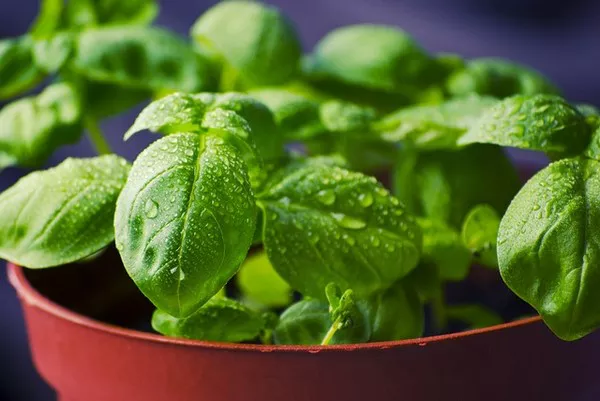Basil, with its fragrant leaves and versatile culinary uses, is a beloved herb in gardens around the world. Whether you’re growing basil indoors on a sunny windowsill or cultivating it in your outdoor garden, understanding its sunlight requirements is crucial for optimal growth and flavor. In this comprehensive guide, we’ll explore the ideal amount of sun basil plants need to thrive, factors that influence sunlight requirements, and tips for providing adequate light in different growing conditions.
Understanding Basil’s Sunlight Requirements
Basil is a sun-loving herb that thrives in warm, sunny conditions. In general, basil plants require a minimum of 6 to 8 hours of sunlight per day to grow vigorously and produce flavorful leaves. However, in hotter climates, some varieties of basil may benefit from partial shade during the hottest part of the day to prevent wilting and sunburn.
Factors Influencing Sunlight Requirements
Several factors influence the sunlight requirements of basil plants, including:
1. Variety: Different basil varieties have varying sunlight preferences. For example, Genovese basil, the classic variety used in pesto, prefers full sun, while Thai basil may tolerate partial shade better.
2. Climate: The amount of sunlight basil plants need can vary depending on the climate. In cooler regions, basil may require more sunlight to thrive, while in hot climates, some shade during the hottest part of the day may be beneficial.
3. Season: Basil is a warm-season herb that thrives in temperatures above 50°F (10°C). During the summer months, when temperatures are highest, basil plants may benefit from some protection from intense afternoon sun to prevent heat stress.
4. Growing Conditions: The growing conditions, such as soil moisture, air circulation, and humidity levels, can also impact basil’s sunlight requirements. Plants grown in well-draining soil with adequate moisture retention may be more tolerant of full sun.
Providing Adequate Sunlight for Basil Plants
To ensure that your basil plants receive adequate sunlight, follow these tips:
1. Choose the Right Location: Plant basil in a sunny location where it will receive at least 6 to 8 hours of sunlight per day. Select a spot with well-draining soil and good air circulation.
2. Monitor Sun Exposure: Keep an eye on your basil plants throughout the day to assess their sun exposure. If they appear wilted or stressed during the hottest part of the day, consider providing some shade using a shade cloth or planting them near taller plants that can offer protection.
3. Rotate Pots: If you’re growing basil in pots or containers, rotate them regularly to ensure that all sides of the plant receive equal sunlight. This helps prevent uneven growth and ensures that the entire plant gets the light it needs.
4. Prune Regularly: Regularly pruning your basil plants not only encourages bushier growth and higher yields but also helps to ensure that sunlight reaches all parts of the plant. Remove any yellowing or shaded leaves to promote healthy growth.
5. Water Wisely: Proper watering is essential for basil plants to thrive. Keep the soil consistently moist but not waterlogged, as overly wet soil can lead to root rot. Water early in the day to allow excess moisture to evaporate and prevent fungal diseases.
6. Mulch: Applying a layer of organic mulch, such as straw or shredded leaves, around your basil plants can help retain soil moisture and regulate soil temperature, reducing the risk of moisture stress during hot, sunny days.
Sunlight Requirements for Indoor Basil Plants
If you’re growing basil indoors, providing adequate sunlight can be challenging, but it’s not impossible. Follow these tips to ensure that your indoor basil plants receive enough light:
1. Choose a Sunny Window: Place your basil plants near a south-facing window where they will receive the most sunlight. If south-facing windows are not available, east or west-facing windows can also provide sufficient light.
2. Use Grow Lights: Supplement natural sunlight with artificial grow lights to ensure that your indoor basil plants receive adequate light, especially during the winter months when daylight hours are shorter. LED grow lights are energy-efficient and provide the full spectrum of light that plants need for photosynthesis.
3. Rotate Plants: Rotate your indoor basil plants regularly to ensure that all sides receive equal sunlight. This helps prevent leggy growth and ensures that the plants remain healthy and vigorous.
4. Avoid Overcrowding: Give your indoor basil plants plenty of space to spread out and receive adequate light. Overcrowding can lead to competition for light and nutrients, resulting in stunted growth and poor flavor.
5. Monitor Humidity Levels: Indoor environments can be drier than outdoor settings, especially during the winter when heating systems are running. Keep humidity levels around your basil plants consistent by using a humidifier or placing a tray of water filled with pebbles near the plants.
Conclusion
Basil plants thrive in warm, sunny conditions and require a minimum of 6 to 8 hours of sunlight per day to grow vigorously and produce flavorful leaves. Factors such as variety, climate, season, and growing conditions can influence basil’s sunlight requirements. By choosing the right location, monitoring sun exposure, and providing adequate care, you can ensure that your basil plants receive the light they need to thrive, whether indoors or outdoors. With proper sunlight and care, you can enjoy a bountiful harvest of fresh basil throughout the growing season.


